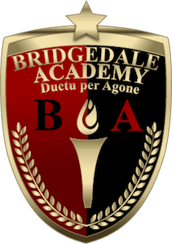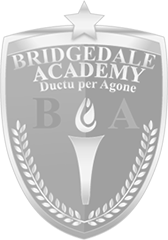Tarasov and Developing Hockey Sense in Practice Training Sessions
By Mike McPartlin, Headmaster, Bridgedale Academy
The Influence of Tarasov and the Russian Hockey System
This article is the second of a 3-part discussion on developing hockey sense. After the ’72 Summit Series, North American hockey coaches were compelled to reassess how they trained and developed youth hockey players. The notion of business as usual was clearly no longer acceptable. The Soviets had been innovative in their approach to hockey, and their athletic performance in the series was stunning. There was an air of concern that the west was at risk of falling behind the Soviets in the race for hockey dominance.
 Tarasov respected and borrowed liberally from Canadian hockey
Tarasov respected and borrowed liberally from Canadian hockey
There is great irony in the fact that Anatoli Tarasov, "The Father of Russian Hockey," actually learned the hockey fundamentals from a Canadian. He regarded "The Hockey Handbook," published in 1951 by Canadian coach Lloyd Percival, as his "Bible" when it came to hockey.
His respect for Percival was so great that he bought hundreds of copies of The Hockey Handbook and had it translated into Russian. He met with Percival in Toronto on more than one occasion and at one point told Percival he read his book "like a schoolboy."
But like any great coach, Tarasov ultimately infused his own beliefs and ideas, gleaned from bandy and soccer, into what he'd learned from Percival, developing his own training methods.
And he effectively revolutionized hockey in the process.
Footnote: Percival's influence on hockey has been world-wide
It's appropriate to point out the incredible influence that Lloyd Percival ultimately had on the hockey world. When he first wrote his book, most Canadian hockey coaches regarded him as a quack, with some NHL coaches forbidding their players from even working with him. Percival had himself been a youth boxing champion, as well as a tennis and cricket player, but NOT a hockey player. And he made his initial contributions to Canadian athletics in fitness training as a track and field coach. He ultimately crossed over into other sports, training many Olympian athletes and helping to enhance their athletic performance. But his greatest and most lasting influence was on hockey, as virtually all hockey played today owes at least some debt to Percival's ideas.
To learn more about Percival's incredible legacy, check out Lloyd Percival, Coach and Visionary, by Gary Mossman.
Tarasov's own book became required reading for coaches at all levels
Coach Tarasov's self-titled book is now out of print and more of a collector's item. And it is not an easy read, because having been translated from Russian (most likely by someone whose first language was not English), it is disconnected and rambling at times. But there are definitely pearls of wisdom to be found in it.
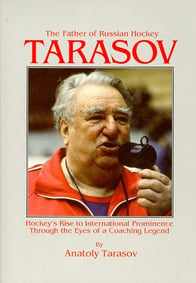 Primary among hockey sense concepts to be gleaned from Tarasov's book are:
Primary among hockey sense concepts to be gleaned from Tarasov's book are:
- Retaining puck possession is of key importance
- Retreating and rebuilding attacks is encouraged when appropriate
- Hockey is more about the players without the puck than those with it
- Interchange positions to create confusion and openings
- Constantly move to create confusion and openings
- Attack with speed and counterattack as quickly as possible
- Pass the puck and then immediately move to make yourself a return pass option
- The puck belongs to your teammates
- The purpose of having the puck is to return it to a teammate
So how have Tarasov's ideas translated into teaching hockey sense today?
Let's first start with a definition. I would define "hockey sense" as being comprised of three things:
- Awareness of on-ice time and space
- Situation-recognition
- Decision-making
By this definition, a player’s hockey sense is his awareness of on-ice time and space that allows him to recognize game situations as they occur so that he is able to assess the options available to him in the situation and then choose an option in response to the situation.
This definition allows for players with poorly developed hockey sense, while at the same time including players with elite awareness, situation-recognition and decision-making skills.
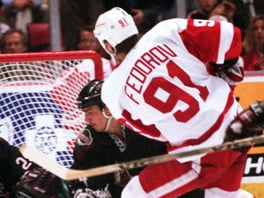 And those elite players today who do have great on-ice awareness, great situation-recognition and great decision-making skills will constantly make use of virtually all of the concepts that Tarasov stressed in training his Soviet players.
And those elite players today who do have great on-ice awareness, great situation-recognition and great decision-making skills will constantly make use of virtually all of the concepts that Tarasov stressed in training his Soviet players.
This reality about elite players today, more than anything else, is part of the legacy that Tarasov (and of course also Percival) left us.
And we know today that these hockey-sense thinking skills CAN indeed be taught in training sessions.
Teaching hockey sense to youth hockey players in practice training sessions
Most high-end coaches today will incorporate one or more of Tarasov’s basic ideas about hockey sense into virtually every drill they run. Of course they probably didn’t get their drills and concepts from Tarasov and likely never read his book.
But his ideas are there nonetheless.
Here are just a few examples of drills and small area games that emphasize some of these concepts:
- Passing drills in which the route and timing of the pass receivers are the keys to the drills
- Passing drills in which weaving and interchanging of positions are the keys to the drills
- Games of "Keep-away" (3-on-3, 4-on-4, etc.) that encourage both movement with the puck and movement off the puck
- Competitive small area games in which pass receivers must return the puck to player who gave it to him, encouraging players to immediately move to get to open ice after passing
- Small area games (especially 3-on-3) in which pass receivers must pass to a teammate other than the one who just passed to him, encouraging players to develop an awareness for the whereabouts and movements of teammates who don't have the puck
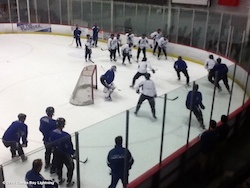 Virtually EVERY small area game that a coach can conceive of can be "adapted" so as to encourage players to develop one or more of the elements of awareness of on-ice time and space, situation-recognition and decision-making. It's really as simple as instituting a rule or rules that will require the player to use some thinking skill during the game.
Virtually EVERY small area game that a coach can conceive of can be "adapted" so as to encourage players to develop one or more of the elements of awareness of on-ice time and space, situation-recognition and decision-making. It's really as simple as instituting a rule or rules that will require the player to use some thinking skill during the game.
One outstanding resource for hockey coaches that encourages this type of thinking is The ABCs of Hockey Coaching, by Tom Molloy and Juhani Wahlsten.
Conclusion
Hockey sense can indeed be taught to youth hockey players during their practice training sessions. That coaches today are so much more aware of this fact is in no small measure due to Anatoli Tarasov and the legacy he left.
Next: Developing hockey sense during competitions
Come see Bridgedale Academy for yourself
Bridgedale Academy invites you to come see for yourself what makes us so special.
Come see for yourself why Bridgedale could be the best thing that ever happened to your son's development:
- as an athlete
- as a hockey player
- as a student
- as a young man
Academic curriculum by Hillsdale Academy.
Athletic training by 200 x 85.
If this topic interests you and you would like to discuss it further, please click the button below so we can schedule a time to chat.
Bridgedale Academy is now accepting transfers for the 2018-19 School Year.



